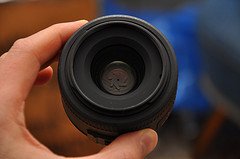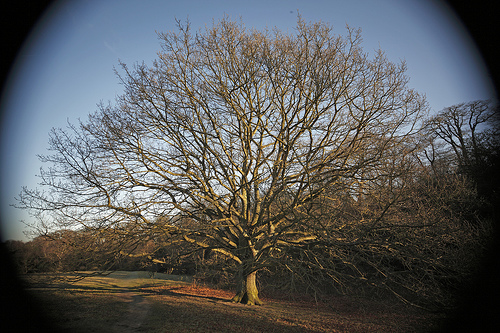The camera aperture is one element in the camera which perhaps has the most effects on your picture. Here’s a collection of some of these effects caused by the lens aperture. So the next time you use a wide or a small aperture, know that you are not changing the exposure.
-
Depth Of Field And Aperture
The primary purpose of aperture settings on the camera is to attain depth of field. The depth of field refers to the area of sharp focus in a photograph. The aperture plays an important role in determining the depth in the composition. The smaller the aperture, more is the depth in the composition thus, putting everything in sharp focus. On the other hand, a wider aperture enables you to achieve a shallow DOF — effectively focused subject amidst defocused background and the foreground.
-
Aperture Is Used For Creating Beautiful Bokeh
Bokeh is the terminology for the aesthetic blur achieved at shallow depth of field. Bokeh is the the way the lens renders out-of-focus points of light. When the camera is tuned for shallow dof and there is an effective brightness in the background of the subject (due to lights and reflections), the camera lens renders beautiful imagery of the out-of-focus points termed bokeh. DOF and the bokeh are two different things. Check out the difference between the bokeh and DOF here.
-
Aperture Is Not Used For Exposure
As contradictory as it sounds, aperture is not used to control the exposure. Not until you set the camera to fully manual mode. On other modes like the aperture priority mode, the fine-tuning the aperture helps in achieving the desired depth of field. The aperture priority mode offered by the camera is a semi-auto mode. Thus, when the user fine-tunes the aperture, the camera intelligently handles the rest of settings (like shutter-speed and even ISO) for ensuring proper exposure for the scene.
-
Chromatic Aberration Is Not An Aperture Effect
The chromatic aberration distorts the color information of the image by producing the fringes of colors along the boundaries that separate dark and bright parts of the image. The chromatic aberration is caused due to the failure of a lens to focus all colors to the same convergence point and not because of in-optimal aperture. The chromatic aberration is not a side-effect of a small aperture but of the lens optics viz. glass.
-
Aperture Can Be Used For Vignetting Effect
Vignetting is the technique of reducing the brightness of image at the edges, so as to draw the viewer’s attention to the center of the frame. At other times it is considered an unwanted artifact. The vignetting effect can be achieved by using the special lenses (or filters) and also during post-processing.
When a photographer uses the special lenses for creating the vignetting effect in camera, the aperture plays a crucial role in darkening the edges. The darkening can be gradual or abrupt, depending on the lens aperture. The smaller the aperture, the more abrupt the vignetting as a function of angle. On the other, there are some lenses which produce undesirable vignetting effect, which can be controlled or completely cured by a reduction in aperture of 2–3 stops.
-
Aperture Results In Loss Of Sharpness
When you are using a wide aperture, the depth of filed is very limited. The areas in the background and foreground of the focal plane will be blurred. As you close down to a smaller aperture, diffraction rolls in killing the sharpness.
-
Diffraction Spikes On Small Apertures
On smaller apertures the diffraction becomes increasingly prominent. This can be used for some very creative effects. This diffraction spike can be used as a creative technique while photographing the lights (or any source of light for that matter) to get the star-light effect. You can generate the star lights by resting the camera on the tripod, focusing on lights and tuning the camera to a very small aperture. This results in scattering of lights from the light source, forming beautiful star like formations of the diffracted lights.
-
Understand The Optimal Aperture
Optimal aperture is the point beyond which the image-sharpness reduces and the impact of diffraction becomes profound. The optimal aperture varies with the camera lens and you will have to run your own tests to figure out the sharpest aperture.
What other effects of aperture do you notice?






“The chromatic aberration is not a side-effect of a small aperture but of the lens optics viz. glass.”
If someone starts off thinking that, they’re completely upside-down on aperture. (The article ought to get that straightened out since it has it backwards throughout.) It’d be more useful to say “chromatic aberration is not a side effect of a LARGE aperture,” which hints at the situation that CA is usually seen in, where you have a “small” f-number (which means a large aperture). Technically it’s true either way, but CAs are usually reduced significantly on stopping down (to a smaller aperture).
“Aperture is not used for exposure” …seriously, how do you think exposure is controlled then? Exposure is not defined as the length of time, but the total amount of light falling into the sensor plane (as our handy reference Wikipedia tells us). Discounting ISO (which isn’t actually changing exposure, though it seems to have the same effect), aperture is one half of the method used for varying exposure, along with the time your sensor is exposed.
@Edwin: Sadly, there’s a lot of difference between theory and the real. Today, Chromatic Aberration is caused by the quality of lens-glass. See more here:http://www.kenrockwell.com/tech/lenstech.htm#ca & http://www.tutorial9.net/tutorials/photography-tutorials/correcting-and-preventing-chromatic-aberration/. And today exposure is controlled by the manual mode or the exposure compensation button. See why the lens is no more responsible for Chromatic Aberration http://www.tutorial9.net/tutorials/photography-tutorials/correcting-and-preventing-chromatic-aberration/.
Also I’ve substantiated the theory behind the use of Aperture in point number 3, which must be read in its entirety. Unless one is using the fully manual M mode, Aperture does not affect the exposure. That’s because today’s cameras use an inbuilt light-meter and have automatic exposure calculation. Exposure is controlled by using the exposure-compensation button, unless you want to experiment with the full “Manual” mode. See http://www.kenrockwell.com/tech/modern-exposure.htm. Also see point 7 at https://www.apnphotographyschool.com/exposure-revisited-10-exposure-myths-truths/ and https://www.apnphotographyschool.com/control-exposure/.
So depending on which auto-semi-auto mode you use on your camera, you really take control of the aperture only in two modes:
1) Aperture Priority (A mode in Nikon or Av in Canon: You vary the aperture and the camera can get the correct exposure by adjusting the shutter-speed automatically. So you are not setting the exposure.
2) Full manual (the M mode on the dial): You control the exposure by setting the aperture AND the shutter-speed. Camera will not make an adjustment to either and you’ll get what you set. (You’ll have to make sure that the camera doesn’t boost the ISO automatically either.)
In this day many photographers still believe that they are controlling the exposure with the aperture. This cannot be farther from the truth (unless the camera is set to M mode). A simple reference to the camera manual shall clarify this. Aperture is for depth-of-field, bokeh and must be used as such.